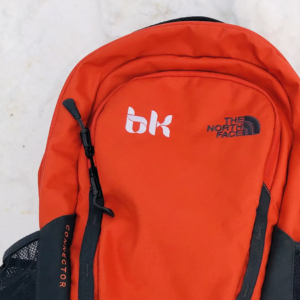Web Conventions: The Logo
If the word “STOP” was suddenly removed from stop signs everywhere… you’d still understand what that giant red octagon was telling you to do, right? But if the shape changed to a square, or the color to blue, you’d be a little more cautious, wouldn’t you? You could figure it out soon enough, but there would most likely be a moment of confusion. Over time you’ve become accustomed to things looking a certain way and being in a certain place.
You may not realize it, but the same idea applies to web design; there are ‘rules’ that people try to follow in order to maintain a good user experience. While seemingly small and fairly simple, when these rules are broken it can lead to confusion and have a negative effect on the way people think of your site and possibly even your business. We call these “web design conventions” (or just web conventions) and we try to follow them for every single project we undertake.
There are a good number of these conventions and we’ll be posting about many of them, but the first two we’ll be discussing today deal with one of the first things you see (or should see) on any website and on every webpage: the logo.
Put ‘Er There!
Maybe it migrated over from printed materials like envelopes and letterheads, or maybe it arose because of the grouping of browser buttons on the left side of the toolbar, but users expect to see your site’s logo – or some kind of ID – in the upper left hand corner of the page. You might not think about it, but you definitely expect it; for whatever reason, our eyes naturally travel to the upper left-hand corner of a webpage for confirmation of where we are.
There’s some leeway with this of course; a logo in the upper right-hand corner, while not the first place someone will look, is close enough that it can be done – though it needs to be done right (read: clearly). Rest assured though that your visitors will subconsciously begin moving their mouse to the upper left before their eyes catch up and realize the cursor needs to head right. It’s not the end of the world, but when the goal is to make the user experience as smooth and intuitive as possible… it’s a speed bump.
If you’re considering placing your main identification anywhere else on the page besides the header… well we’d love to hear your justification. I have no doubt that it’s been done, but in terms of usability it’s a mistake. 10 years ago we dealt with slow load times because that’s all we knew, while today more than a few seconds can result in a lost visitor. But during those many minutes, while we sat waiting for the rest of the page to load, the logos were there in the upper left-hand corner waiting with us, and it’s what we’ve come to expect. This isn’t to say you can’t put any logos anywhere else, but the main one should be there at the top.
Take Me Home Tonight
In addition to identification, the logo serves another important purpose that people have come to expect: clicking it will take you home. Personally, I don’t ever remember being told “now son, if you want to go back to the beginning just click on the logo,” but it’s a knowledge that is deeply ingrained in my mind and the minds of internet users everywhere. Some people like to be safe and include “Home” in their main navigation as well, but it usually serves as a fallback; most people will intuitively click the logo to return to the homepage.
Not linking your logo up correctly can lead to more frustration on the part of your visitors, and our patience when it comes to websites is steadily declining. After a few futile clicks, if there isn’t another obvious alternative, users may just give up and start clicking their back button – hopefully to your homepage but possibly right past it and back to where they came from. If your logo takes a user somewhere besides the homepage it can be even worse as they’ll immediately feel lost and frustrated and are much more likely to give up rather than try to figure out how to learn your ‘new style’ of navigation.
These are just two of the many conventions that we as a web design agency follow. It may seem like a limitation, and it’s true that breaking the mold can, in some cases, help you to stand out of the crowd, but it can also hurt you if it’s not done carefully. As you learn more about these conventions you might begin to consciously notice them, and you’ll especially take note when they aren’t done right! Take a look at your own site: how does it hold up in regards to these web conventions? Because you’re so familiar with it, it can be hard to take a step back and view it like a new visitor would but those can be the most important people that come to your site.
Think your site may need some help? Contact us today to set up a free needs analysis meeting!
Other Articles
Navigating the Off-Season: Marketing Strategies for Outdoor, Overlanding, and Camping Brands
The world of outdoor adventure, overlanding, and camping is fueled by the passion for exploration, nature, and the thrill of...
Mastering Black Friday Cyber Monday Campaigns: Strategies for Outdoor Retail Brands
Black Friday Cyber Monday (BFCM) has become a pivotal period for businesses across various industries, and the outdoor retail sector...
Why Outdoor Retailers Must Plan Black Friday Cyber Monday Campaigns Well in Advance
For online retailers in the outdoor industry, the Black Friday Cyber Monday (BFCM) weekend represents a significant sales opportunity. However,...



